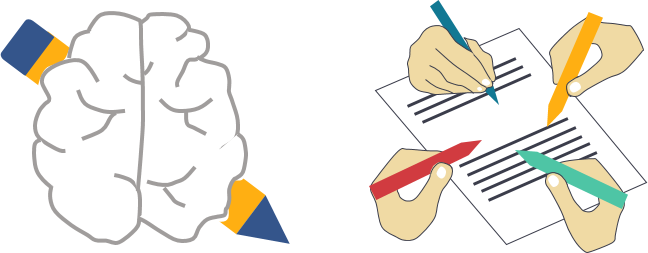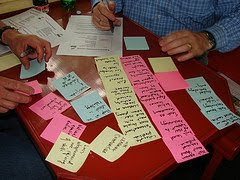Silent Brainstorming / Brainwriting
Generate greater diversity of ideas and foster inclusivity
Chris Baynham Hughes
What Is Silent Brainstorming / Brainwriting ?
It is a quick way to generate a lot of diverse ideas whilst minimising bias introduced by others verbalising their suggestions before everybody has a chance to get their ideas down.
Why Do Silent Brainstorming / Brainwriting ?
During the discovery (thinking) phase of the Mobius loop we are looking to generate as many different ideas as possible. These ideas can then be grouped using affinity mapping, voted on to bring focus and discussed to ensure shared understanding amongst the group. This practice is a foundation for almost all of the collaborative practices within the Open Practice Library.
Key benefits:
- Rapidly generates a lot of ideas
- Gets everybody in the room contributing and engaged with the workshop/ meeting
- Enables quieter members of the group to have their voice heard
- Enables focus on the best ideas
- Increases diversity of ideas and reduces bias due to status or dominance of individuals; e.g., the HiPPO effect (Highest Paid Person's Opinion)
How to do Silent Brainstorming / Brainwriting ?
Distribute sticky notes and pens or use an electronic collaboration tool such as Miro.
Set the problem statement/ challenge/ subject you wish to generate ideas for. Consider carefully how you phrase the question. A practice such as 'How might we...' can really help.
Set a timer and ask all participants to write their suggestions down.
Take your practice to the next level by prompting the group to focus on quantity not quality and even encourage some suggestions to be impractical. You're looking for rapid generation of ideas that will be further iterated upon so diversity really matters. Where possible, diversity should also be considered for the make up of the group.
At the end of the time period, place the sticky notes somewhere visible to all participants, such as a wall or flip chart.
The next step is Affinity mapping, dot voting and discussion.
This practice is a foundation practice to others such as 10-for-10, lightning decision jam and retrospectives. Used appropriately it can really help accelerate the development of psychological safety within the group.
Look at Silent Brainstorming / Brainwriting
Links we love
Check out these great links which can help you dive a little deeper into running the Silent Brainstorming / Brainwriting practice with your team, customers or stakeholders.


